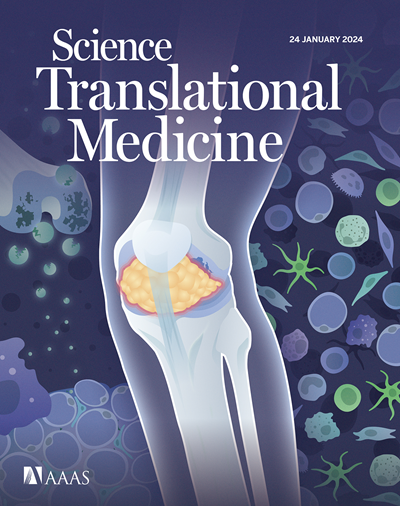Increased keratinocyte activity and PIEZO1 signaling contribute to paclitaxel-induced mechanical hypersensitivity
IF 15.8
1区 医学
Q1 CELL BIOLOGY
引用次数: 0
Abstract
Recent work demonstrates that epidermal keratinocytes are critical for normal touch sensation. However, it is unknown whether keratinocytes contribute to touch-evoked pain and hypersensitivity after tissue injury. Here, we used a mouse model of paclitaxel treatment to determine the extent to which keratinocyte activity contributes to the severe neuropathic pain that accompanies chemotherapy. We found that keratinocyte inhibition by either optogenetic or chemogenetic methods largely alleviated paclitaxel-induced mechanical hypersensitivity across acute and persistent time points from 2 days through 3 weeks. Furthermore, we found that paclitaxel exposure sensitized mouse and human keratinocytes to mechanical stimulation and enhanced currents of PIEZO1, a mechanosensitive channel highly expressed in keratinocytes. Deletion of PIEZO1 from keratinocytes alleviated paclitaxel-induced mechanical hypersensitivity in mice. These findings suggest that nonneuronal cutaneous cells contribute substantially to neuropathic pain and pave the way for the development of new pain relief strategies that target epidermal keratinocytes and PIEZO1.
角化细胞活性和PIEZO1信号的增加有助于紫杉醇诱导的机械超敏反应
最近的研究表明,表皮角质形成细胞对正常的触觉至关重要。然而,目前尚不清楚角质形成细胞是否参与组织损伤后触觉诱发的疼痛和过敏。在这里,我们使用紫杉醇治疗的小鼠模型来确定角化细胞活性对伴随化疗的严重神经性疼痛的影响程度。我们发现,通过光遗传学或化学遗传学方法抑制角质形成细胞,在2天至3周的急性和持续时间点上,很大程度上减轻了紫杉醇诱导的机械超敏反应。此外,我们发现紫杉醇暴露使小鼠和人类角质形成细胞对机械刺激敏感,并增强了PIEZO1电流,这是一种在角质形成细胞中高度表达的机械敏感通道。角化细胞中PIEZO1的缺失减轻了小鼠紫杉醇诱导的机械超敏反应。这些发现表明,非神经元性皮肤细胞在神经性疼痛中起着重要作用,并为开发针对表皮角化细胞和PIEZO1的新疼痛缓解策略铺平了道路。
本文章由计算机程序翻译,如有差异,请以英文原文为准。
求助全文
约1分钟内获得全文
求助全文
来源期刊

Science Translational Medicine
CELL BIOLOGY-MEDICINE, RESEARCH & EXPERIMENTAL
CiteScore
26.70
自引率
1.20%
发文量
309
审稿时长
1.7 months
期刊介绍:
Science Translational Medicine is an online journal that focuses on publishing research at the intersection of science, engineering, and medicine. The goal of the journal is to promote human health by providing a platform for researchers from various disciplines to communicate their latest advancements in biomedical, translational, and clinical research.
The journal aims to address the slow translation of scientific knowledge into effective treatments and health measures. It publishes articles that fill the knowledge gaps between preclinical research and medical applications, with a focus on accelerating the translation of knowledge into new ways of preventing, diagnosing, and treating human diseases.
The scope of Science Translational Medicine includes various areas such as cardiovascular disease, immunology/vaccines, metabolism/diabetes/obesity, neuroscience/neurology/psychiatry, cancer, infectious diseases, policy, behavior, bioengineering, chemical genomics/drug discovery, imaging, applied physical sciences, medical nanotechnology, drug delivery, biomarkers, gene therapy/regenerative medicine, toxicology and pharmacokinetics, data mining, cell culture, animal and human studies, medical informatics, and other interdisciplinary approaches to medicine.
The target audience of the journal includes researchers and management in academia, government, and the biotechnology and pharmaceutical industries. It is also relevant to physician scientists, regulators, policy makers, investors, business developers, and funding agencies.
 求助内容:
求助内容: 应助结果提醒方式:
应助结果提醒方式:


